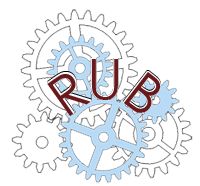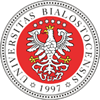Proszę używać tego identyfikatora do cytowań lub wstaw link do tej pozycji:
http://hdl.handle.net/11320/8772| Tytuł: | Relations L1/L2 dans l’emploi de la morphologie modificative de l’italien à l'écrit |
| Inne tytuły: | Use of modifying morphology in Italian written texts: relations between Italian as a mother tongue and as a foreign language |
| Autorzy: | Colombo, Omar |
| Słowa kluczowe: | Italien L1/L2 écrit besoins de formation apprentissage morpho- lexical Italian as a Mother and Foreign Language Written Needs in a Foreign Language Learning Morphosemantic and Lexical learning |
| Data wydania: | 2019 |
| Data dodania: | 3-lut-2020 |
| Wydawca: | Wydawnictwo Uniwersytetu w Białymstoku |
| Źródło: | Białostockie Archiwum Językowe, nr 19, 2019, s. 67-77 |
| Abstrakt: | Objet : l'usage que les italophones font de la dérivation modificative italienne afin de comprendre les besoins de formation en L2. Protocole: Un dessin affiche des oppositions dimensionnelles (petit homme vs. homme grand) et qualitatives (chien gentil vs. chien méchant) parmi les référents, ce qui devrait motiver l’usage des suffixes modificatifs. Quelques résultats : – utilisation fréquente des suffixes diminutifs -ino/-etto/-ello et de l’augmentatif -one ; – priorité donnée aux formes modificatives nominales, au signifié dimensionnel et aux modificatifs lexicalisés. Conclusion : en L2 il faudrait donner la priorité à l’apprentissage des constructions les plus simples, productives et fréquentes. Subject. The student’s needs in Italian as a Foreign Language on the basis of how the native Italian speakers use the modifying morphology. Protocol. An image displays some dimensional oppositions (small man / big man) and qualitative oppositions (friendly dog / naughty dog) among the referents, which could be translated using the modifying suffixes. Some results. – The most common modifying morphemes used are the diminutive suffixes -ino/-etto/-ello, the augmentative -one. – The nouns are the most frequently modifying words. The dimensional sense and the lexicalized modifying forms are privileged. Conclusion. The most simple, productives and frequent modifying constructions should be favored in Foreign Language learning. |
| Afiliacja: | Université de Malaya |
| E-mail: | omar.colombo@um.edu.my, omcolombo@yahoo.fr |
| URI: | http://hdl.handle.net/11320/8772 |
| DOI: | 10.15290/baj.2019.19.04 |
| ISSN: | 1641-6961 |
| metadata.dc.identifier.orcid: | 0000-0002-1503-3732 |
| Typ Dokumentu: | Article |
| Występuje w kolekcji(ach): | Białostockie Archiwum Językowe, 2019, nr 19 |
Pliki w tej pozycji:
| Plik | Opis | Rozmiar | Format | |
|---|---|---|---|---|
| BAJ_19_2019_O_Colombo_Relations_L1_L2_dans_l’emploi_de_la_morphologie_modificative_de_l’italien_`a_ l'écrit.pdf | 2,11 MB | Adobe PDF | Otwórz |
Pozycja jest chroniona prawem autorskim (Copyright © Wszelkie prawa zastrzeżone)

